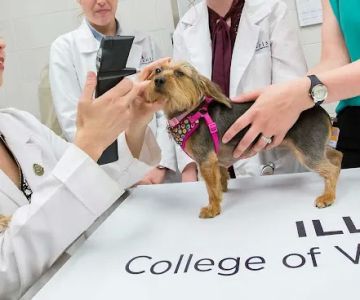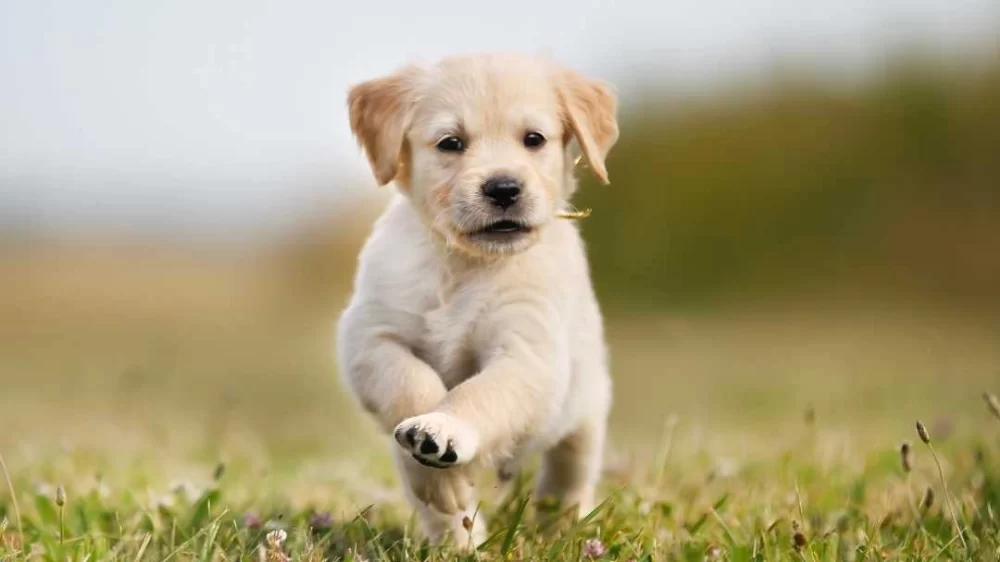How to Teach Your Dog to Come to You Anytime, Anywhere
As pet parents, we all want our dogs to respond promptly when called, no matter where we are. In this article, we’ll explore the key methods for teaching your dog to come when called, regardless of the environment. However, before diving into the specifics, it’s essential to understand a few basic principles of dog training.
While the principles of learning apply universally to animals, many dog owners find recall training especially challenging. Let’s dive into the process of teaching your dog to reliably come to you when called, whether you’re at home or in a distracting environment.

1008 W Hazelwood Dr, Urbana, IL 61802, USA
See DetailsWhy Teaching a Reliable Recall is Difficult
So, why is it often tough for dogs to learn to come when called? One of the most common reasons for a lack of success in recall training is the inadvertent “poisoning” of the cue. This happens when the command (like "come") gets associated with something the dog perceives as a punishment.
For example, imagine your dog dislikes bath time. If your dog comes running to you when called, only for you to immediately place them in the bathtub, they’ll start associating the recall cue with something unpleasant. This connection can make them reluctant to respond to that cue in the future.
How to Fix a Poisoned Cue
If you’ve accidentally poisoned the “come” cue, there’s an easy fix: change the cue! Instead of using the word “come,” choose a new, neutral command that you can consistently associate with positive experiences. The key here is that your dog hasn’t yet built negative associations with the new word.
For example, words like “Here,” “Touch,” or “Now” can serve as effective alternatives. I personally like using “Touch” because it’s short, simple, and doesn’t carry the same level of frequency or emotional baggage as “come.” It’s an ideal cue to build strong recall behavior without the risk of poisoning the word.
How to Use "Touch" as a Recall Cue
When transitioning to a new cue like “Touch,” it’s important to avoid just having your dog come close to you. Instead, you want them to physically touch your hand or finger with their nose. Here’s how to use the “Touch” cue for recall:
- Start by getting your dog engaged in a mild activity, such as playing with a toy they don’t find overly exciting.
- Call them over, and when they touch your hand, reward them with a delicious treat right away.
- Gradually practice the cue at a distance and repeat this pattern regularly.
- Progress to more challenging environments, such as practicing with open doors or mild distractions in the background.
- Once your dog is reliably responding to “Touch” indoors, practice the cue on leash walks or in your yard.
Spontaneously offering the cue and rewarding your dog right away is key to making this behavior fluent. This kind of unpredictability builds a strong, responsive recall that will be useful no matter where you are.
Training Recall in Various Environments
Start by teaching your dog to come to you in a familiar, safe, and quiet environment. It’s crucial to avoid using force or coercion at any point during training. Once your dog is reliably responding, begin to introduce additional factors such as distance, duration, and distractions—one element at a time. Only after they’re comfortable with all three should you begin combining them for more difficult training scenarios.
One important consideration is managing your dog’s rewards effectively. Think of yourself as the “employer” and your dog as the “employee.” Just as employees earn more for completing tougher tasks, your dog should receive better rewards for more challenging recalls. Use high-value treats to motivate them, especially when practicing in distracting environments.
Knowing your dog’s favorite treats is essential to successful training. If your dog’s “currency” isn’t particularly enticing, such as regular kibble, they may not respond to your recall in a highly distracting setting like the dog park. Reserve special treats for these occasions, and they’ll be far more likely to respond to your cue.
Managing Distractions and Setting Up for Success
If your dog seems distracted or unresponsive, you’ve probably pushed them too far too quickly. Remember that a reliable recall cue takes time and patience, and you should always prioritize your dog’s ability to focus on you over increasing the difficulty level. If they’re overwhelmed by distractions, return to a less challenging environment and gradually build up from there.
It’s also important to remember that if you use any new cue like “Touch” too much or too quickly, you run the risk of “poisoning” it as well. Keeping the cue occasional and unpredictable will prevent this from happening and ensure your dog continues to associate it with positive rewards.
The Importance of Communication in Dog Training
Building a strong recall in any environment requires time, consistency, and positive reinforcement. Your bond with your dog plays a fundamental role in this process. By using techniques like “Touch” for recalls and rewarding your dog with high-value treats, you’ll strengthen your communication and trust.
Above all, be patient and mindful of how you train. Dogs respond to the way we communicate with them, and creating clear, positive associations with training cues will lead to better results. With practice, your dog will come to you in any situation—whether it's at home, in the park, or in the most distracting environments.











